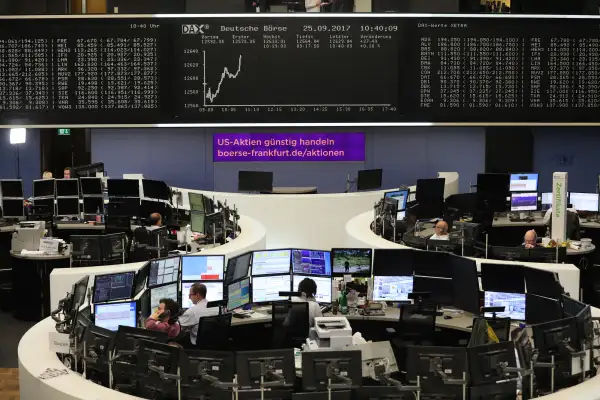Worried About U.S. Stocks? Put Your Money Here Instead
Money is not a client of any investment adviser featured on this page. The information provided on this page is for educational purposes only and is not intended as investment advice. Money does not offer advisory services.

For months, investors have complained the U.S. bull market has gone on too long with stocks getting too expensive. Now they're discovering a fresher, cheaper one across the pond.
Since the U.S. bull market celebrated its eighth birthday in March — making it twice as old as the average rally — fund investors have yanked $50 billion out of U.S. stock mutual funds and exchange-traded funds. At the same time, they've poured more than $140 billion into foreign equity funds and ETFs, according to the Investment Company Institute. European equities have been a major beneficiary.
"The bull in Europe has stronger, newer legs than the U.S.," said Jeffrey Kleintop, chief global investment strategist for Charles Schwab. "If you are worried about the U.S. stock market and the length of this rally and how extended profit margins are here, then Europe offers you diversification."
It offers a lot more:
EUROPEAN EQUITIES ARE CHEAPER
European stocks are trading at a price/earnings ratio (a widely used measure to gauge how frothy stocks are) of around 20, based on 10 years of averaged profits. That's about a 30% discount to the average P/E for U.S. equities, according to figures tracked by Barclays, even though historically U.S. and foreign shares have traded roughly on par with one another.
Some individual European stock markets — such as Spain and the United Kingdom — are cheaper still, offering value-minded investors greater opportunities than they can find among domestic equities.
EUROPEAN STOCKS HAVE MORE ROOM TO RUN
The bull market in U.S. shares has been raging for 8 1/2 years, in part because the U.S. economy has expanding since June 2009.
"The U.S. dealt with the pain upfront and started working its way out of the financial crisis since 2009," said Bryan Lloyd, a portfolio manager and analyst for the asset management firm Harding Loevner. "By contrast, Europe's economy got off to a much later start."
It wasn't until the second quarter of 2013 that Europe finally emerged from recession and began to grow again. That was a good four years after the U.S. recovery began.
"For the longest period of time, corporate treasurers weren't comfortable investing in Europe because of all the uncertainty there," Lloyd said. But that's already beginning to change, he said, as the region's banking system is healing and "pent-up demand for credit and to refresh capital and plant is coming through."
No wonder European equities are up 19% so far this year, versus 12% for the S&P 500. Over the past five years, U.S. shares have surged around 12% a year, while European equities have gained less than 5% annually, implying the rally in Europe is far from gassed.
EUROPEAN STOCKS HAVE A STRONGER ECONOMIC TAILWIND
The economy in the Eurozone is expected to grow 2.2% this year. That's slightly faster than the 2.1% growth the U.S. economy is on track for, according to I.H.S. Markit.
But you also have to consider what policy makers are doing to juice growth.
In the United States, the Federal Reserve has already begun raising short-term interest rates as the economy has reached a point of maturity. The European Central Bank, by contrast, continues to use negative interest rates to try to stimulate growth.
Even if the ECB has a change of heart, its next move will be to gradually "taper" its stimulative efforts, not to raise rates.
EUROPEAN STOCKS HAVE A STRONGER PROFIT TAILWIND
While much has been written about the corporate profit rebound in the United States, earnings among large corporations in Europe are growing even faster.
This year, earnings for companies in the STOXX Europe 600 index are expected to rise nearly 16%, according to analysts at Thomson Reuters. By comparison, profits for U.S. companies are forecast to grow less than 10% this year in 2017.
EUROPEAN STOCKS ARE MORE DIVERSIFIED
The huge run-up in technology stocks over the past five years has contributed to the frothiness of the U.S. market.
In the U.S., tech makes up nearly a quarter of the broad market. By contrast, it represents less than 6% of the European market.
The European market is largely driven by several different sectors, including financial services, industrials, basic materials, and telecommunications, says Jeffrey Kleintop of Charles Schwab.
What do those sectors have in common? They tend to do well in inflationary times. And if the European economy catches a little fire going forward, inflationary pressures overseas could serve as yet another tailwind for investing in Europe.
